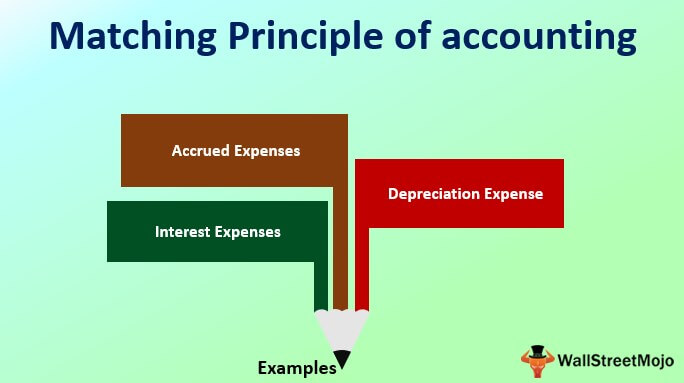
To illustrate the matching principle, let’s assume that a company’s sales are made entirely through sales representatives (reps) who earn a 10% commission. The commissions are paid on the 15th day of the month following the calendar month of the sales. For instance, if the company has $60,000 of sales in December, the company will pay commissions of $6,000 on January 15. The matching principle stabilizes the financial performance of companies to prevent sudden increases (or decreases) in profitability which can often be misleading without understanding the full context.
Our Services
This disbursement continues even if the business spends the entire $20 million upfront. It may last for ten or more years, so businesses can distribute the expense over ten years instead of a single year. Sippin Pretty pays its employees $19 an hour to produce their signature teacups. Luckily, Sippin Pretty just sold all of the teacups recently produced by its employees. If the revenue and cost of goods sold are increasing inconsistently, then neither of these two-figure probably have some problem. Assume we have sold the goods to our customers amount $70,000 for the month of December 2016.
Why You Can Trust Finance Strategists
All the expenses should be recorded in the period’s income statement in which the revenue related to that expense is earned. Now that you’ve seen an example, it is worth noting the matching principle is fundamental to double-entry bookkeeping and forms a cornerstone of modern accounting practices. When applied correctly, this principle of accounting helps businesses accurately record their financial information for a specific period of time.
Question 5: what happens if expenses are not properly matched with revenues?
- Leverage the full capabilities of Lark Sheets to document, track and collaborate on your accounting projects initiatives.
- A business may end up with an inaccurate financial position of its finances.
- If the revenue and cost of goods sold are increasing inconsistently, then neither of these two-figure probably have some problem.
- Timing differences occur when the recognition of revenue or expenses is spread over multiple accounting periods due to factors like long-term contracts or installment payments.
The cost is not recognized in the income statement (also known as profit and loss or P&L) during the payment period but is recorded as an expense in the period when the goods or services are actually received. At that time, the amount is deducted from prepayments (assets) on the balance sheet. There are situations in which using the matching principle can be a disadvantage.
However, rather than the entire Capex amount being expensed at once, the $10 million depreciation expense appears on the income statement across the useful life assumption of 10 years. Now, if we apply the matching principle discussed earlier to this scenario, the expense must be matched with the revenue generated by the PP&E. For instance, the direct cost of a product is expensed on the income statement only if the product is sold and delivered to the customer. The matching principle of accounting is a natural extension of the accounting period principle.
GAAP Matching Principle: Why You Need to Understand It

When you use the cash basis of accounting, the recordation of accounting transactions is triggered by the movement of cash. Thus, revenue is recognized when cash is received, and supplier invoices are recognized when cash is paid. This means that the matching principle is ignored when you use the cash basis of accounting. Matching principle is especially important in the concept of accrual accounting.
Their expertise can help you navigate challenges and ensure compliance with accounting standards. The matching principle in accounting is one of the basic fundamental principles in Generally Accepted Accounting Principles (“GAAP”). We’re going to look at what is the matching principle, why what is a capital lease versus an operating lease you need to understand it and an example. Otherwise, the title should have been passed onto the buyer so as to create a legal obligation for the buyer to pay for them. The second aspect is that the full cost of those items must be included in that particular period’s income statement.
Not all costs and expenses have a cause and effect relationship with revenues. Hence, the matching principle may require a systematic allocation of a cost to the accounting periods in which the cost is used up. Hence, if a company purchases an elaborate office system for $252,000 that will be useful for 84 months, the company should report $3,000 of depreciation expense on each of its monthly income statements. The matching principle seeks to create a correlation between revenues and expenses by ensuring that all revenue earned in an accounting period is also recorded as an expense for that same period. This allows businesses to link revenues and expenditures so that the net income can be accurately represented on financial statements.
For example, if a business pays a 10% commission to sales representatives at the end of each month. If the company has $50,000 in sales in the month of December, the company will pay the commission of $5,000 next January. Below is a break down of subject weightings in the FMVA® financial analyst program. As you can see there is a heavy focus on financial modeling, finance, Excel, business valuation, budgeting/forecasting, PowerPoint presentations, accounting and business strategy.








